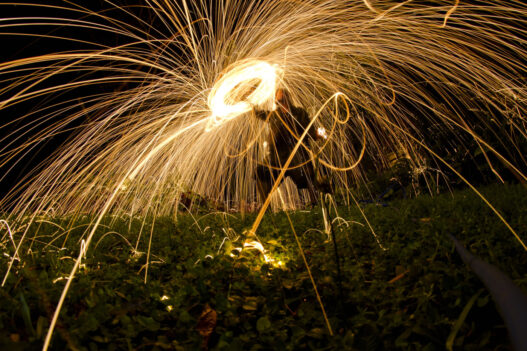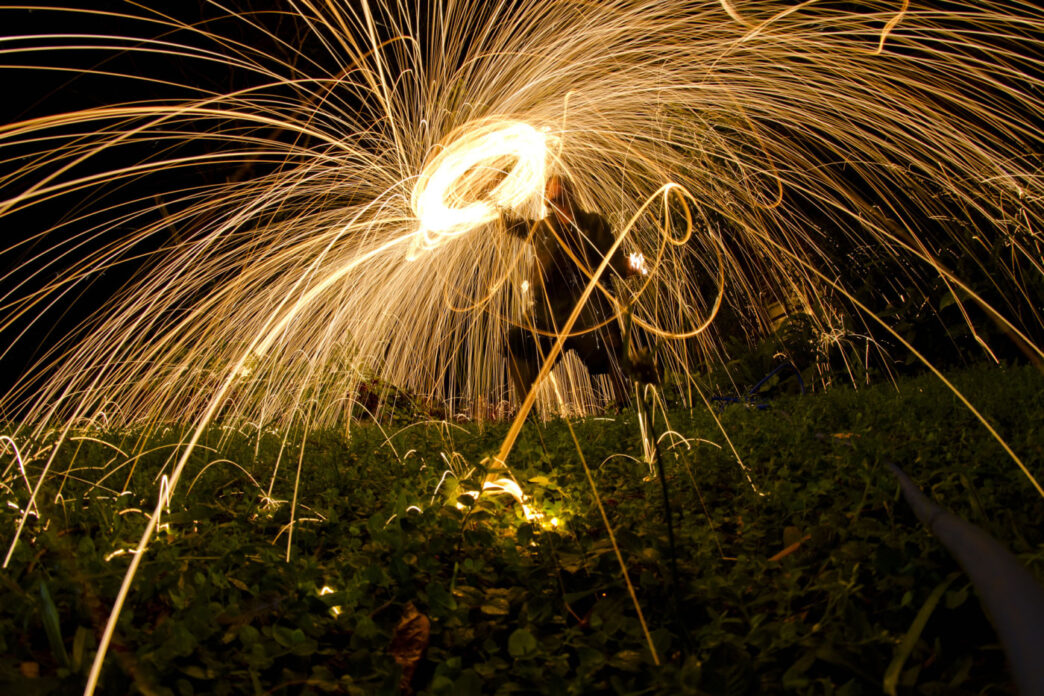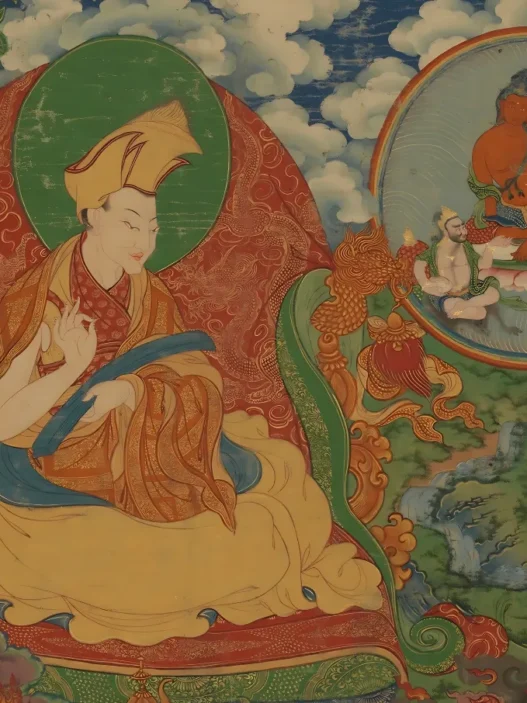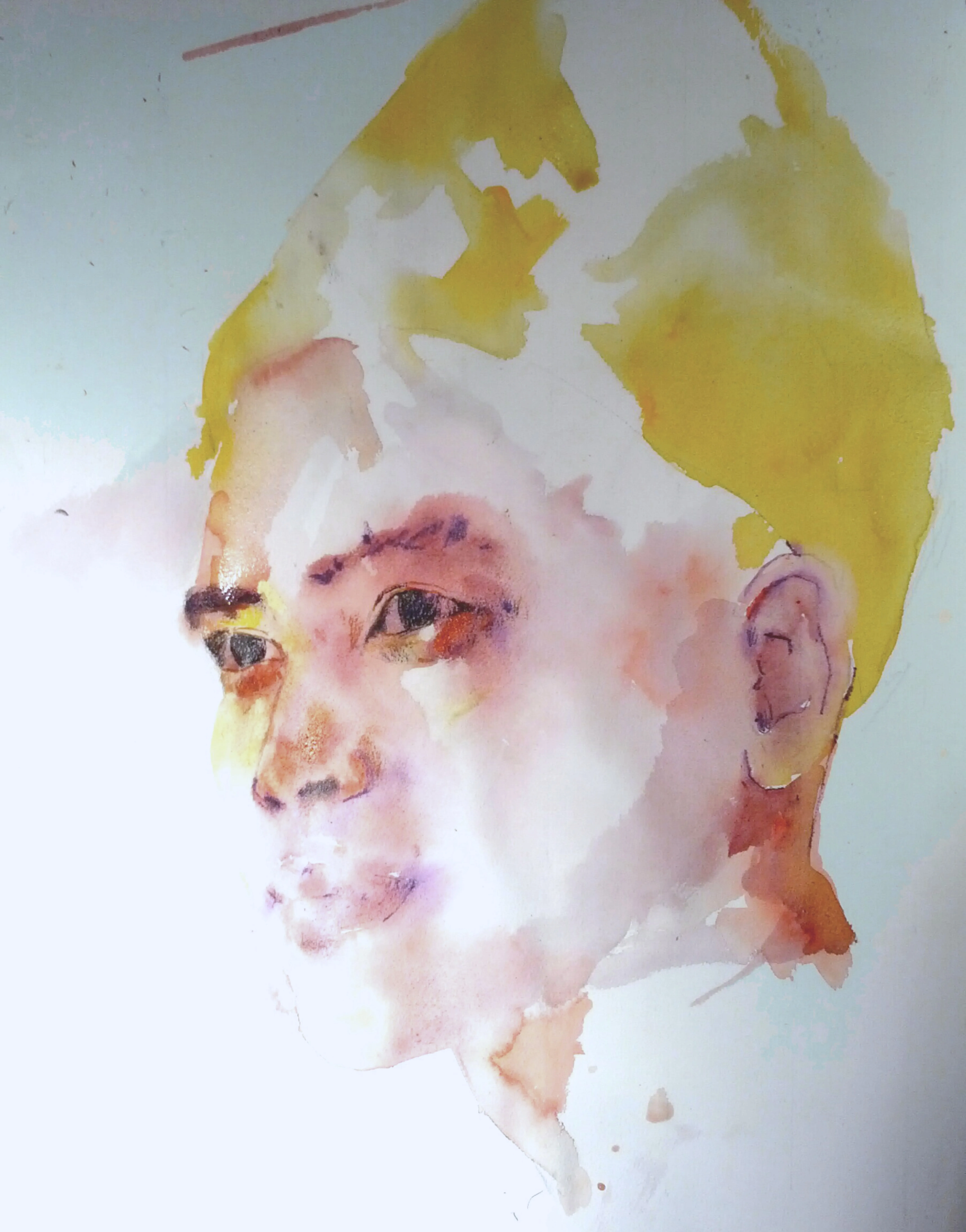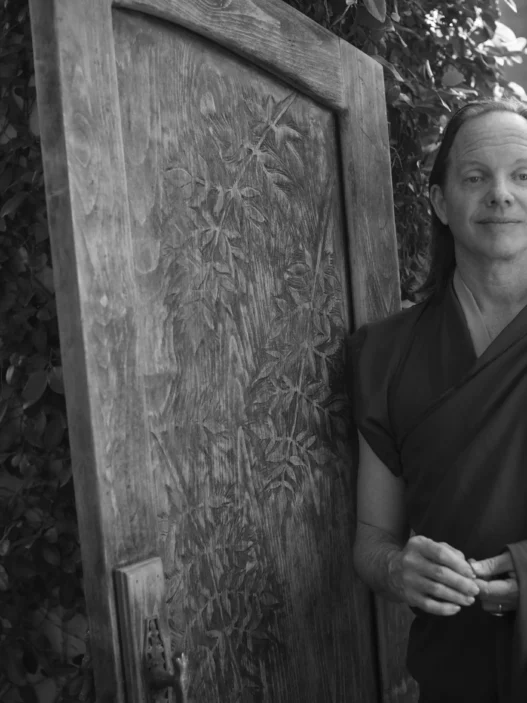Reading
Download this post as a .pdf file
Chakras
As we mentioned in our previous post about Prana & Channels, the original purpose of the yoga asanas is to reach in from the outside to affect the inner channels, or nadis, through which prana and our thoughts travel, linked together. Our yoga practice loosens up chokepoints in the inner channels, where they twine around each other and form the circular-shaped “wheels,” or chakras.
This post presents a summary of the different chakras, including their ancient names, general location, and function—according to traditional Indian and Tibetan sources. These sources often differ from each other in specific details; these differences often have a specific purpose and are not just mistakes.
A Little about Chakras
The word chakra in Sanskrit means “wheel,” and the Tibetans also use their word for “wheel”—which is korlo—for the chakras. The Sanskrit word comes from the root √kir, which means “to do or make.” We see this root in the very common Sanskrit word karma, or action, and in English words such as create and cereal (a food that has been grown or made).
The cha part of the word chakra is what we call a “reduplication” or repetition of the kar part of the word—the implication being that a wheel is something that keeps “doing” something over and over again.
There is a central energy channel that closely follows the path of the spine through the body. Inside this channel runs inner wind or energy, called prana in Sanskrit and lung in Tibetan. At certain points along this channel, smaller channels branch out.
If we could look down a person’s spine from the top of their head and see the central channel, we would see the smaller channels branching off like spokes of a wheel. This is why they are called “chakras” or wheels.
Chakras are created by the chokepoints mentioned above, which themselves are caused by the two side channels as they twine around the central channel. One of the goals of the yoga asanas is to open up these chokepoints, freeing the energy trapped within the chakras.
The Root Chakra
“Root Chakra” is the English name for the Muladhara Chakra. The Sanskrit word muladhara is made up of two parts: mula and adhara. Mula in Sanskrit means root, and the corresponding Tibetan is tsa. The same Sanskrit root appears in the English mural, meaning a “painting on a wall,” since a wall was a strong foundation or root for a building.
Adhara, or ten in Tibetan, means basis. This ultimately comes from the Sanskrit root √dhir, which means “to hold firm.” This same root is found in the very common Sanskrit word dharma, which can mean “spiritual way” but has the more basic meaning of a thing: anything that “holds” its own essence. We find this root in the English words tree (a firmly-rooted plant); true (firm); and farm (a holding of land).
The general location of the Root Chakra is in the perineum, or area of the groin, between the two legs. This chakra is generally related to sexual energy, especially in its spiritual form as a pure form of inner wind which can greatly aid in transforming the body into light.
In the Tibetan tradition, this energy is connected to the Chakra of the Secret Place (Sang Ne Kyi Korlo), which is also known as the Chakra of Maintaining Bliss (De-kyong Gi Korlo). This chakra is said to be located four fingerwidths down the spine from the navel chakra, which would mean that it corresponds to the next chakra, the one called the “Seat of the Self.”
The Chakra of the Seat of the Self
The Chakra of the Seat of the Self is called Svadhisthana Chakra in Sanskrit. The word svadhisthana is made of two parts, sva and adhistha. Sva means its own, or self, and is found in the English words self and suicide. Adhistha means a seat or place where something stays, and its root is found in the English words stay and station.
This chakra is generally located near the base of the spine and broadly speaking is connected with the same energy as the Root Chakra and the Chakra of the Secret Place.
The Chakra of the City of Jewels
The Chakra of the City of Jewels is called Manipura Chakra in Sanskrit. The word manipura is made of two parts: mani and pura. Mani means a jewel, and may be related to the English word mane, in the idea of an “ornament upon the neck.”
Pura means full, and is found in the English full and ball. In olden times it very commonly meant “full of people,” and thus a town or city. We see it at the end of many Indian town names, such as Singapore (City of the Lions).
This chakra is located at the level of the navel, and is related again to sexual energy and its pure form of inner fire; imagine the spark of fire within a ruby. The Tibetans call this chakra the Chakra of Emanation (Trulpay Korlo), since inner fire is the source from which the great bliss of enlightenment emanates.
The Unstruck Chakra
The Sanksrit name for the Unstruck Chakra is Anahata Chakra. Again, anahata is made of two words, an and ahata. An is a form of a, which is the negative in Sanskrit: not. We find it at the beginning of English words such as atheist (not believing in God) and apathetic (not passionate).
Ahata means struck or beaten in the sense of hitting a drum or a bell. It comes from the Sanskrit root √han, which means to smite. This root is found in the Sanskrit word ahinsa (non-violence) and the English word gun (an instrument for violence).
The Unstruck Chakra is found at the level of the heart, and the general idea is that the beating of the heart is something which occurs from the heart itself, and not because someone has struck it like a drum.
The Tibetans call this chakra the Chakra of All Things (Chukyi Korlo), since within it lies a tiny drop where all our karmas are stored, and from which all things in our world, and ourselves, emanate. This chakra is thus related with the creation of the world, and is also the place where we first experience ultimate love.
The Chakra of Purity
The Sanskrit name for the Chakra of Purity is Vishuddhi Chakra. The Sanskrit root here is √shudh, meaning to purify. This is probably related to English words meaning to shine, such as shine, sky, and scintillate.
The Tibetans call this chakra the Chakra of Experience (Longchu Kyi Korlo). The point is that this chakra is located at the level of the throat or base of the neck, and the inner winds related to it play a role in the experience of food and drink—the beginning of the process where these substances are purified for use by the body.
The Chakra of Command
The Sanskrit name for the Chakra of Command is Ajnya Chakra. The word ajnya comes from the root √jnya, which means to know; the prefix a– makes it to inform or to command. We see this same root in the English know and ignorant (where the prefix i– is negative).
The Tibetans call this chakra the Chakra of the Third Eye, or literally “The Chakra between the Two Eyebrows” (Min-tsam Gyi Korlo). Sometimes it is said to be located more generally in the middle of the forehead.
This chakra plays a major role in allowing us to focus or direct our mind on an object, and it is commonly used for this purpose throughout Tibetan Yoga.
The Chakra of a Thousand Petals
The Sanskrit name for the Chakra of a Thousand Petals is Sahasrara Chakra. The word sahasrara has two parts, sahasra and ara. Sahasra means a thousand, and ara means a spoke of a wheel, or petals of a chakra.
The Tibetans refer to this chakra as the Chakra of Great Bliss (Dechen gyi korlo). The name derives from the sensation one feels when special substances at this chakra melt down during successful yogic practice.
To deepen your study on many of the topics introduced in this post, please refer to the following course on The Knowledge Base:











